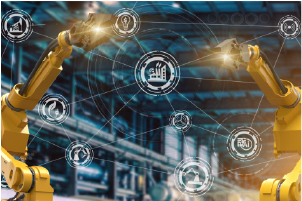Building IIoT Platforms that Deliver ROI at Scale
Like many IT/OT modernization solution initiatives, adopting an industrial internet of things (IIoT) platform is a journey. Companies should start small, identifying projects that can deliver on a targeted value proposition, then scale toward a fully modernized business.
Organizations need strategy and buy-in to advance from a crawl to a walk to a run. They must move from using point solutions that solve a single problem to the integration of many complimentary point solutions as building blocks in an end-to-end IIoT solution.
To get to an end-to-end IIoT solution that delivers true value in the form of return on investment (ROI), companies can work with an integrator that provides the expertise required to integrate and facilitate data transfer across a group of systems. Getting to this stage involves strategic vision, a holistic approach, and the ability to effectively utilize data.
Having an IIoT Vision
Companies must have a long-term vision for delivering IIoT solutions. A technology partner can help provide point solutions that solve immediate needs, but the goal of the IIoT journey is to develop a system or group of systems that integrate point solutions into an end-to-end solution. This type of vision is multi-faceted, like a blueprint for a skyscraper that is made up of hundreds of apartments.

For example, manufacturing companies have multiple systems for delivering raw materials, manufacturing products, and shipping parts. IIoT begins with implementing sensors to gather critical data throughout these processes. Manufacturers must also have a means of transmitting and analyzing this information, which functions like sheet music for a symphony, guiding all the parts so they can operate in harmony. Raw data is useless without a strategic means of extracting insights to drive future decision-making.
Aspects of the IIoT Vision
The IIoT vision should encompass areas such as worker safety, productivity, availability, risk prevention, preventative maintenance, a connected workforce, and profitability. The vision should optimize processes so that the customer can get the optimal value from their assets, people, and systems.
The vision is a way for a company to imagine where it wants to be. On the way, the organization lays stepping stones in the form of point solutions. The bridge between the point solutions and the end-to-end solution involves connecting workers with valuable insights and optimized training, and increasing process automation to create a factory, refinery, plant, or business of the future. When automation is deployed effectively, workers are empowered to increase productivity and efficiency while being assured of their safety in the workplace.
Organizations must innovate to stay competitive. But conceptualizing complex solutions can be intimidating for companies, so it’s important to be grounded in that vision. Early IIoT adopters have the vision and can invert the typical process for making technological leaps. They take a holistic view, allowing for ideas to manifest into realized innovation.
Taking a holistic view means looking at the entire operation. Global companies with a holistic view ask themselves what their business units have in common and what problems they are facing.
Leveraging Analytics to Understand ROI
Achieving ROI through IIoT is critical for getting a line of business (LOB) sponsor for your initiatives. The executive sponsor or champion is the person who makes leaps in IIoT possible.
The challenge with point solutions is figuring out what the next move will be. LOB leaders get impatient waiting to see what comes next, or when they’ll see any tangible results.

Today, companies have greater access to statistical analysis tools and complex mathematics used to predict outcomes; capabilities formerly reserved to those with access to data scientists. Through these tools, companies can look at a system or organizational approach and more easily determine what to invest, where to invest, and what savings could be realized when optimizing at a strategic level.
A company that uses analytics may save between $750,000 and $1 million within the first year. Some well-known, global companies have been able to turn on a dime to transform their organizations with IIoT by digitizing their facilities.
For example, chemicals company BASF was able to focus on its sustainability goals and battle the challenges of the pandemic while still increasing sales by 16% to reach €19.4 billion. Environmentally responsible sugar producer Florida Crystals has been able to leverage end-to-end IIoT to create a state-of-the-art sugar mill that uses renewable energy and waste recycling to make its production process cost-efficient and clean.
The secret to making the transition to an end-to-end IIoT solution is using analytics for processes such as anomaly detection, asset management, connected worker, and preventative maintenance. Intelligent forecasting allows companies to reach a high level of demand planning and adjust immediately.
Working with an Integrator
Our customers often say they started with IIoT but lost interest because they didn’t see a return on their investment. The connective tissue between point solutions and holistic vision are common stumbling blocks for these companies.
Organizations that are giving up on end-to-end IIoT need to work with a partner that is an expert in IT and OT convergence.
At CBT, we can bring integration engineering to your IIoT projects to improve human performance and change management. Our skillset centers on integration and connectivity and making technologies speak to each other. We often recommend beginning with a simple solution like Connected Worker to get on the road to IIoT success.
Find out how to get ROI from your IIoT initiatives. Check out the CBT IIoT Practice.
